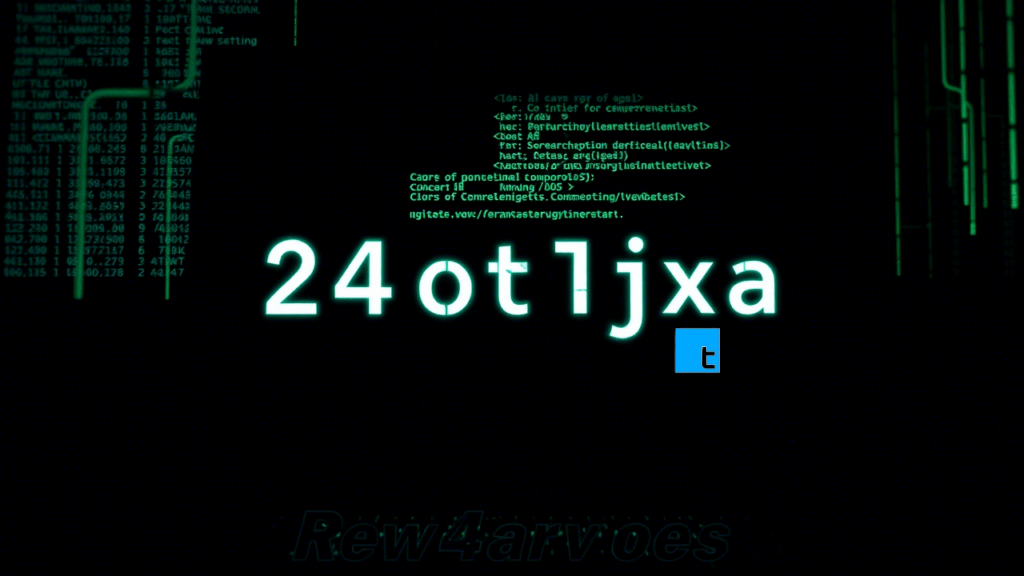In the vast landscape of the digital age, countless codes, terms, and mysterious tags float through our daily interactions online. One such enigma is 24ot1jxa. Although it may seem like an arbitrary collection of letters and numbers, the phrase has been raising concerns among cybersecurity experts and tech enthusiasts alike. In this article, we’ll explore why 24ot1jxa harmful, dissecting its implications, hidden threats, and the real-world impact it could have if left unchecked.
Understanding 24ot1jxa: What Is It?
Before diving into why 24ot1jxa harmful, it’s essential to understand what it represents.
24ot1jxa is not a term you’ll find in traditional glossaries. Instead, it acts more like a digital ghost—appearing in suspicious files, questionable emails, hidden URLs, and other obscure corners of the internet. Some believe it’s a randomly generated code; others argue it’s a signature for deeper, darker schemes.
At its core, 24ot1jxa often signals:
- Malicious scripts embedded in software
- Encrypted malware codes
- Potential phishing mechanisms
- Mysterious data collection endpoints
Because it lacks an official identity, it becomes even more dangerous, blending into everyday digital interactions without raising immediate red flags.
The Subtle Threats Behind 24ot1jxa
The primary reason why 24ot1jxa harmful lies in its subtlety. Unlike traditional threats, it doesn’t crash systems or announce its presence through obvious glitches. Instead, it quietly infiltrates, collects, and manipulates. Here’s how:
Silent Data Breaches
When 24ot1jxa appears within an application or website, it might function as a secret data siphon. Without ever notifying the user, it can harvest:
- Login credentials
- Personal identification details
- Financial information
- Private communications
Since it operates under layers of encryption and coded obscurity, standard antivirus programs often fail to detect it.
Weaponized Disinformation
Another dimension to why 24ot1jxa harmful stems from its use in information warfare. Hidden scripts attached to 24ot1jxa-related materials can:
- Redirect users to fake news sites
- Inject false narratives into social media feeds
- Amplify conspiracy theories through bot networks
In this way, 24ot1jxa isn’t just a cybersecurity risk; it’s a threat to truth itself.
Why Traditional Defenses Fail
One of the scariest realities behind why 24ot1jxa harmful is that traditional cybersecurity defenses are often inadequate.
- Antivirus software usually targets known malware signatures. Since 24ot1jxa morphs frequently, it often bypasses signature-based detection.
- Firewalls protect against unauthorized access, but if 24ot1jxa operates from a seemingly legitimate application, it slips through.
- Behavioral analysis tools look for unusual actions, but 24ot1jxa can mimic normal behavior patterns.
Its ability to remain one step ahead of security measures is what allows 24ot1jxa to cause such widespread, unnoticed damage.
Real-World Examples: The Consequences of Ignoring 24ot1jxa
To better illustrate why 24ot1jxa harmful, let’s consider some hypothetical, yet entirely plausible, scenarios.

The Corporate Sabotage
Imagine a Fortune 500 company unwittingly downloading a software package laced with 24ot1jxa code. Over months, sensitive information—including intellectual property and trade secrets—leaks to competitors. By the time the breach is discovered, the damage is irreversible, resulting in millions of dollars in losses.
Personal Identity Hijack
A college student downloads a free “study tool” that hides a 24ot1jxa script. Weeks later, they find their bank account emptied, social media hacked, and credit score ruined, all because their information was harvested and sold on the dark web.
Political Destabilization
Government agencies, already prime targets for cyber attacks, face increased risks with 24ot1jxa infiltration. By spreading false documents or intercepting confidential communications, 24ot1jxa can be a weapon of modern geopolitical disruption.
The Psychology of Trust and Deception
An overlooked aspect of why 24ot1jxa harmful is psychological. Our online behavior often relies on an unconscious trust—trust that a download link is safe, that a website is secure, or that an email is legitimate. 24ot1jxa exploits this trust, manipulating users into lowering their guard.
When deception becomes normalized, broader societal effects occur:
- Increased skepticism
- Erosion of digital economies
- Greater polarization and paranoia
In short, 24ot1jxa not only attacks systems but also attacks the human psyche.
Combating the Threat: What You Can Do
Understanding why 24ot1jxa harmful is only half the battle. Action is required to protect oneself from its dangers.
Vigilance in Digital Hygiene
- Always verify the source before downloading software or clicking links.
- Regularly update all applications and systems to patch vulnerabilities.
- Use multi-factor authentication wherever possible.
Advanced Security Tools
While basic antivirus software struggles, more sophisticated tools offer better protection:
- Endpoint detection and response (EDR) systems
- AI-powered anomaly detection
- Secure web gateways (SWG)
Choosing security solutions that adapt to evolving threats can minimize risks from entities like 24ot1jxa.
Education and Awareness
The digital world changes rapidly. Keeping up-to-date on emerging threats, recognizing suspicious behaviors, and spreading awareness are crucial in defending against stealthy attacks like those associated with 24ot1jxa.
Future Implications: If We Ignore 24ot1jxa
If society fails to recognize why 24ot1jxa harmful, we risk ushering in an era where:
- Digital security is a luxury only the wealthy can afford.
- Everyday interactions online come with constant background fear.
- Trust—the foundation of commerce, communication, and community—disintegrates.
Moreover, if left unchecked, 24ot1jxa-like threats could evolve into autonomous, AI-driven cyberweapons capable of operating without human oversight, making them even harder to contain.
Conclusion: Vigilance is the Price of Digital Freedom
In a world increasingly defined by its digital experiences, understanding why 24ot1jxa harmful is not optional—it’s essential. Its hidden nature, ability to exploit psychological biases, and resilience against traditional defenses make it a uniquely insidious threat.
However, by cultivating awareness, employing sophisticated security strategies, and fostering a collective commitment to digital integrity, we can confront and neutralize such dangers. The future belongs to those who recognize the invisible battles being fought today and choose to prepare for them.
visit website and find interesting topics: technotraps


